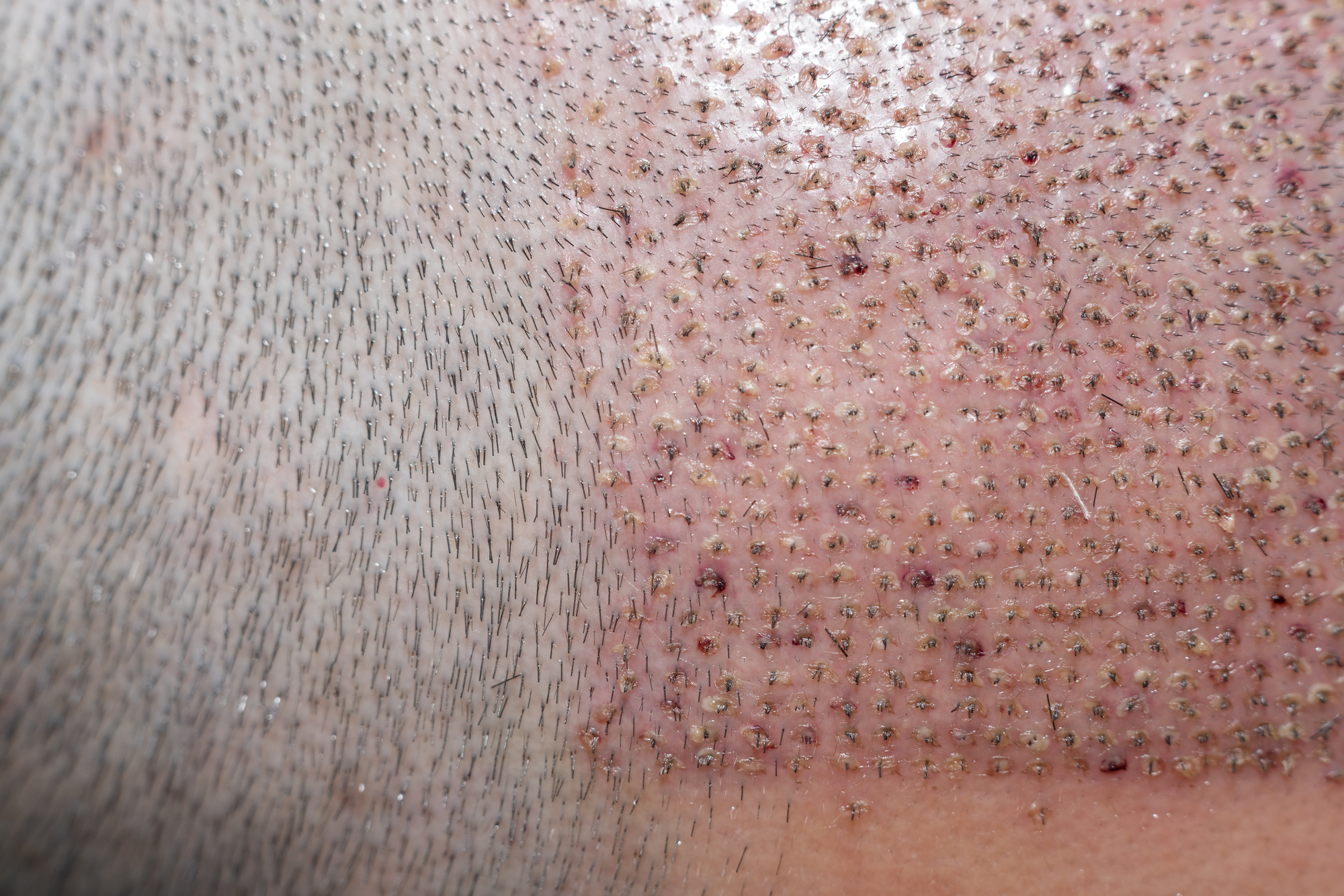FUE hair transplant
The correct diagnosis should always be made by a specialized dermatologist.
What is Alopecia?
Hair loss, also known as alopecia or baldness, refers to a hair loss on the scalp or body. Most often we refer to the scalp. The severity of hair loss can vary from a small area on the head to occupy the entire body. There is usually no inflammation or scarring. Hair loss in some people causes severe psychological stress. The most common types include: androgenetic alopecia, female androgenetic alopecia, gyroid alopecia, and diffuse alopecia. The cause of hair loss in androgenetic alopecia is a combination of heredity and male hormones, the cause of female hair loss is unclear, the cause of gyroid alopecia is autoimmune, and the cause of diffuse alopecia is usually a physically or psychologically stressful event. Diffuse alopecia is very common after pregnancy. Less common causes of hair loss without inflammation or scarring include hair pulling, certain medications, including chemotherapy, HIV / AIDS, hypothyroidism, and malnutrition, including iron deficiency. Causes of hair loss that occur with scarring or inflammation include fungal infection,lupus erythematosus, radiotherapy, and sarcoidosis. Treatment for hair loss may simply involve accepting the condition. Medication with minoxidil or finasteride and hair transplant surgery can be tried therapeutically. Gyroid alopecia can be treated with steroid injections into the affected area but these must be repeated frequently to be effective. Hair loss is a common problem, in the age of 50 it affects about half of men and a quarter of women. About 2% of the population develops gyroid alopecia at some point.
Symptoms and diagnosis
-
Androgenetic type Alopecia
In 95% of cases of alopecia in men, the hair falls out from the sides of the forehead and / or thins in the area known as the "top". As the condition progresses they become more intense until they finally meet, leaving a hair ring around the back of the horseshoe-shaped head. The incidence of baldness varies from population to population and is based on genetic background. About one in four men will experience noticeable hair loss by the age of 30, and this rate increases to two in three men by the age of 60. In rare cases, AA can start as early as age 12.Most likely, multiple genes contribute to AA, the most important of which appears to be the androgen receptor gene, located on the X chromosome (inherited from the mother). In the past it was believed that baldness was inherited from the mother's grandfather. While there is some basis for this belief, it is now known that both parents contribute to the possibility of hair loss. The trigger is the hormone dihydrotestosterone.
- Infections
- Skin diseases
- Medicines
- Wounding
- Gyroid alopecia
The diagnosis of alopecia is always made by a specialized dermatologist. Depending on the case, the diagnosis may be based only on the clinical picture, and the history may require a hair scan, hair radiogram or skin biopsy of the scalp.

FUE TREATMENT
The operation is performed in septic surgery conditions and under local anesthesia and is divided into two main phases. The first concerns the extraction of hair follicles, the number of which is determined by many factors such as the ability of the donor area, the needs of the recipient area as well as the general needs of the patient. In the second phase, the hair follicles are implanted and at the end of it, the patient returns home with the instructions that he must follow until the first re-examination. For more information and complete information, call us at the doctor's office to answer any questions you may have.
Hair transplantation is the only method that can correct androgenetic alopecia. In hair transplantation, in essence, a redistribution of the remaining hairs of the scalp takes place, and this must be done in the best possible way. The main goal of the transplant is the natural result. But that alone does not make a transplant successful. The transplant should ensure that, 1) when the hair loss process continues the permanent hair that has been placed in the bald area will continue to give a natural look, 2) when the hair loss process continues, there will be hairs left on the donor area for a second or even a third transplant.


